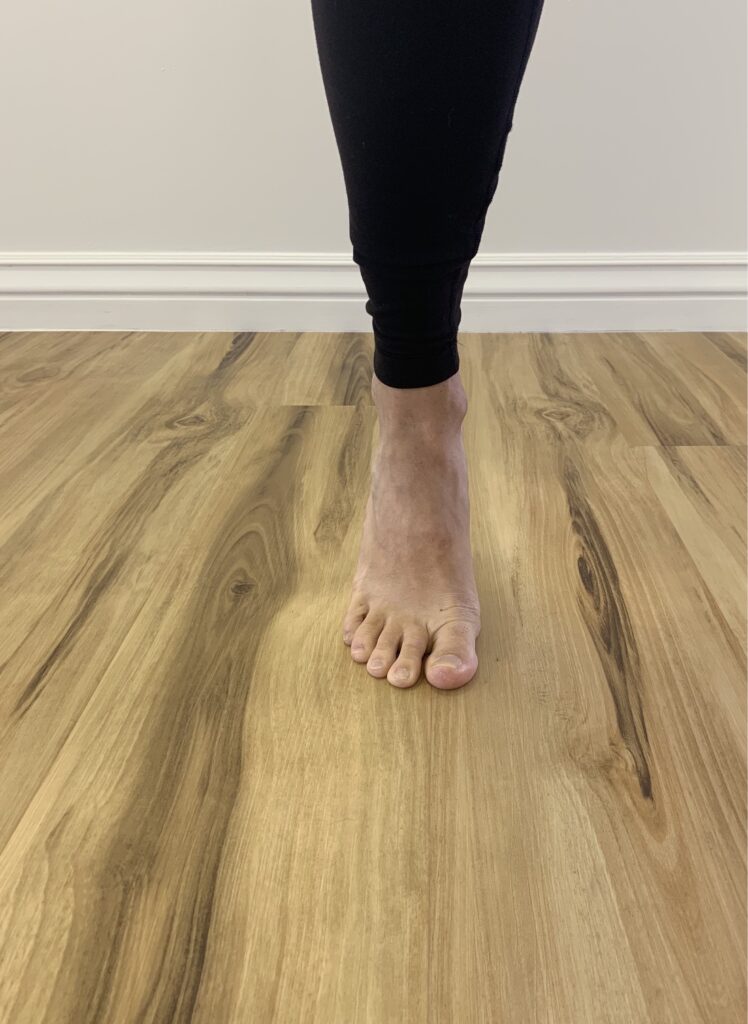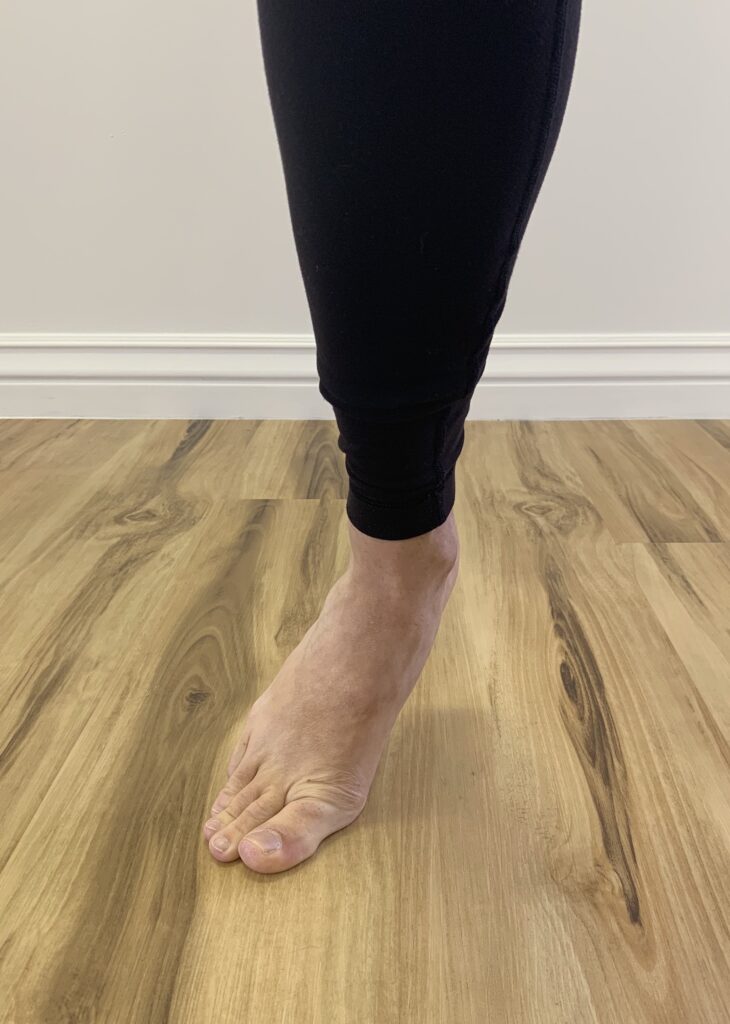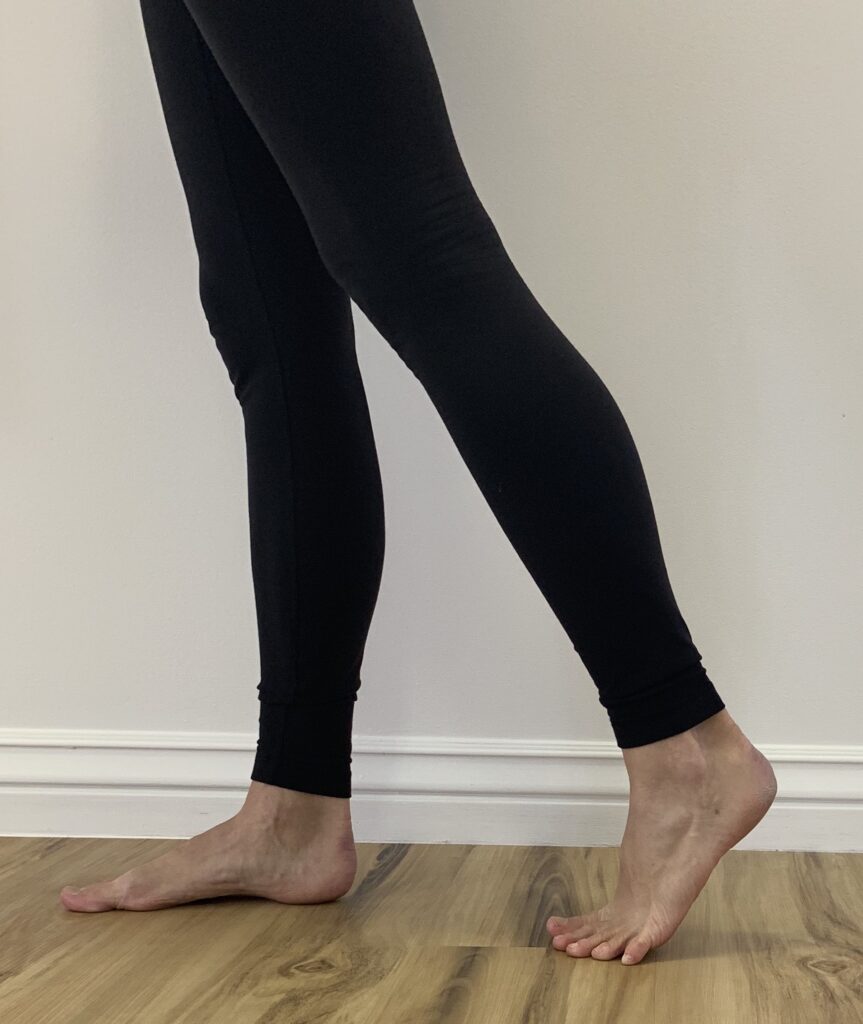5 ways the foot and leg could be causing pelvic floor issues (and vice versa)
Part 2 of the “Foot to Floor” series:

toe extension with weight in 2nd toe 
example of bunion alignment
The last post focused on alignment of the knee and arch of foot. Here, we touch on the toe and ankle and how it affects gait. Please read all of the series to get a more complete picture of what may be affecting you.
The way we walk has significant impact on our pelvis. Poor toe alignment and stiffness changes the way you walk.
Are you walking correctly? Do your toes and feet move well? Find out here!
For example, a bunion limits toe extension (opposite of pointing). Ankle stiffness does too. A stiff ankle and/or toe limits how much the foot can get behind the body.
This can cause problems such as:
- Early toe-off – The leg doesn’t get full motion when walking or running, resulting in limited ability to “push off”. The gluteus maximus’ job is to move the body forward by pushing off of the ground. You only have as much strength as you have range of motion. Weakness in the gluteals can contribute to weakness in the pelvic floor. You end up with too much work happening ahead of the body (reaching forward) This adds strain on the hip, more impact on the foot and up the leg to the pelvis and hip.
- Worsening of the bunion. In the image above, the toe pushes further to the side when weight is on the inside of that toe.
- The leg can swing out to the side, or the opposite hip drops to make room for the other leg to come through (think hip pain on this one). Know anyone whose hips sway/drop side-to-side?
- Many compensation patterns change the way force transfers from the ground up the body.

How are we supposed to walk?
Ideally, the gluteals push our bodies forward. Weight and ground forces should be evenly distributed from the ground up. Where we make contact on the foot depends on whether you are walking or running. When we land on one foot, we should be able to hold that leg under our body, centered over the toe next to the big toe. That leg continues behind the body to move us forward. If we get stuck by the toe or ankle, or swing the leg out, the body has to accommodate for that somehow. Choosing a pattern that isn’t ideal, puts strain elsewhere, making joints, ligaments, and muscles imbalanced, weak, and painful.
This relates to the pelvic floor because:
If the bigger hip muscles (gluteus medius and maximus) are weak, the deeper hip rotators (obturator) become either weak or over-active, tight, and imbalanced. This can cause pelvic pain, usually felt near the sit-bones and/or tailbone, or may feel like deep hip pain.
Lack of motion in any muscle will lead to weakness. Weakness in the pelvic floor leads to issues such as incontinence, prolapse, sciatica, low back pain, and more.
This is why you can have a combination of issues and may not know it because you are only treating one part of the problem.
What if I have foot pain and pelvic pain or weakness?
Consult a Physical Therapist who specializes in pelvic health. A standard PT can help you with foot pain, but if you don’t get fully better, or have additional issues with pelvic floor, SI, low back, knees, or others, see a pelvic PT who can fully treat the whole picture.
In conclusion:
If one thing changes too much in the body, issues will likely show up somewhere else. The connection between the toes and the pelvic floor is very common but often missed. If you have both concerns, look at both and how they may be connected.
